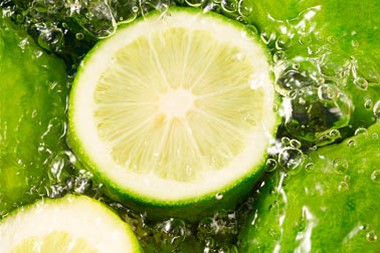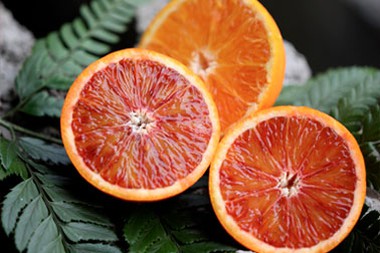Is Cellulase Powder a Bacteria or Enzyme?
In the world of industrial enzymes, it holds a significant place due to its remarkable abilities. However, there seems to be some confusion surrounding its nature- is it a bacteria or an enzyme? In this article, we will explore the truth behind this question and shed light on the fascinating properties and applications of it.
Understanding it:
it is, in fact, an enzyme rather than a bacteria. Enzymes are biological catalysts that facilitate chemical reactions in living organisms. They are typically proteins that help break down complex molecules into simpler substances, thus enabling various metabolic processes. it, specifically, is an enzyme that plays a crucial role in cellulose degradation.
Cellulose, the most abundant organic compound on Earth, forms the structural component of plant cell walls. Its intricate structure and strong hydrogen bonds make it resistant to degradation by most organisms. However, cellulose-degrading enzymes like it possess the capability to break down cellulose into its constituent sugars, primarily glucose, through hydrolysis.
Properties of it:
1. Multiple Enzyme System: it is not a single enzyme but a combination of different cellulases. These cellulases work synergistically to efficiently break down cellulose. The main types of cellulases in it include endoglucanases, exoglucanases, and β-glucosidases.
2. Optimum pH and Temperature: Each cellulase component within it has a specific pH and temperature range in which it exhibits maximum activity. Generally, it functions optimally at a pH range of 4.5 to 5.5 and a temperature range of 45°C to 55°C.
3. Substrate Specificity: it specifically targets cellulose and hydrolyzes the β-1,4-glycosidic bonds between glucose units in the cellulose chain. It does not exhibit significant activity on other polysaccharides like hemicellulose or starch.
Industrial Applications of it:
1. Biofuel Production: it is widely utilized in the production of biofuels, such as ethanol, from lignocellulosic biomass. The enzyme efficiently breaks down cellulose into glucose, which can be fermented by microorganisms to produce biofuels.
2. Textile and Laundry Industry: it finds application in the textile and laundry industry for its ability to remove cellulose-based stains, such as those caused by fruit juices or grass. The enzyme breaks down the cellulose fibers in the stains, making them easier to wash away.
3. Food and Beverage Industry: it plays a role in various processes within the food and beverage industry. It is used in the production of fruit juices to extract more juice from fruits and improve clarity. Additionally, the enzyme helps enhance the extraction of flavors from plant materials in the brewing and distilling processes.
4. Animal Feed and Agriculture: it is utilized in animal feed to improve the digestibility of cellulose-rich feed ingredients, such as corn stalks or straw. It aids in breaking down cellulose, releasing the nutritional content for better absorption by animals. In agriculture, it can be used to improve the efficiency of silage fermentation by breaking down cellulose in the plant material.
Conclusion:
Cellulase Powder is an enzyme with remarkable cellulose-degrading abilities. Although it may be mistaken for a bacteria due to its name, it is essential to clarify that it is, in fact, an enzyme. With its diverse industrial applications, it contributes to various sectors, including biofuel production, the textile industry, food and beverage production, and animal feed. Understanding its nature and applications can lead to advancements in industries and pave the way for sustainable solutions.
Discovering Three Cellulase-Rich Foods for Improved Digestion
it is a vital enzyme that plays a crucial role in the breakdown of cellulose, a complex carbohydrate found in plant cell walls. This enzyme aids in the digestion of plant-based foods, promoting efficient nutrient absorption and overall digestive health. While it is primarily produced by certain microorganisms, there are specific foods that contain natural sources of this enzyme. In this article, we will explore three such foods that are rich in them, highlighting their benefits and how they can contribute to improved digestion.
1. Pineapple:
Pineapple, a tropical fruit known for its unique taste and numerous health benefits, is also a rich source of it. This fruit contains an enzyme called bromelain, which not only aids in the digestion of proteins but also provides cellulase activity. Bromelain assists in breaking down plant fibers, making it easier for our bodies to digest cellulose-rich foods. Incorporating fresh pineapple into your diet can help promote healthy digestion and alleviate digestive discomfort.
2. Papaya:
Another fruit renowned for its digestive properties is papaya. Papaya contains an enzyme called papain, which is similar to bromelain and exhibits cellulase activity. Papain aids in the digestion of proteins, but it also possesses cellulase properties that contribute to the breakdown of cellulose. Regular consumption of papaya can enhance digestive efficiency, particularly when consuming plant-based foods with higher cellulose content.
3. Aspergillus oryzae Fermented Foods:
Aspergillus oryzae is a filamentous fungus commonly used in food fermentation processes. This fungus produces a variety of enzymes, including it. Foods fermented with Aspergillus oryzae, such as soy sauce, miso, and tempeh, contain it and offer numerous health benefits. These fermented foods not only provide additional dietary cellulase but also improve the overall digestibility of plant-based proteins, carbohydrates, and fibers. Incorporating these foods into your meals can enhance digestion and promote gut health.
Benefits of Cellulase-Rich Foods:
Consuming foods rich in cellulase offers several benefits for digestive health:
1. Enhanced Nutrient Absorption: it helps break down cellulose, allowing for improved extraction of essential nutrients from plant-based foods. This promotes better nutrient absorption and utilization in the body.
2. Reduced Digestive Discomfort: By aiding in the digestion of cellulose, cellulase-rich foods can alleviate bloating, gas, and other digestive discomforts associated with consuming fiber-rich meals.
3. Improved Gut Health: The efficient breakdown of cellulose it contributes to a healthy gut environment by supporting the growth of beneficial gut bacteria. This, in turn, helps maintain optimal digestion and overall digestive well-being.
Conclusion:
Cellulase plays a crucial role in the digestion of cellulose, a complex carbohydrate found in plant cell walls. While this enzyme is primarily produced by microorganisms, certain foods offer natural sources of it. Pineapple, papaya, and Aspergillus oryzae fermented foods such as soy sauce, miso, and tempeh are rich in them and provide various digestive benefits. Incorporating these foods into your diet can enhance digestion, improve nutrient absorption, and promote gut health. By harnessing the power of cellulase-rich foods, you can take a proactive approach toward optimizing your digestive well-being.

Understanding the Distinction between Cellulose and Cellulase
Introduction:
In the realm of biology and biochemistry, cellulose and cellulase are two terms that often come up when discussing plant cell walls and the breakdown of cellulose. While they sound similar, they have distinct roles and characteristics. This article aims to shed light on the difference between cellulose and cellulase, providing a comprehensive understanding of their functions and importance.
Cellulose:
Cellulose is an abundant organic compound found in the cell walls of plants, algae, and certain bacteria. It is a complex polysaccharide made up of repeating glucose units joined together by β-1,4-glycosidic bonds. These long chains of glucose molecules form a rigid structure that provides strength and support to plant cells.
Functionally, cellulose serves as a crucial component of the extracellular matrix, giving plant cells their shape and protecting them from external stresses. It contributes to the structural integrity of plant tissues, forming the bulk of plant biomass. Cellulose is insoluble in water and resistant to most digestive enzymes in animals, making it an essential dietary fiber for herbivorous animals.
Cellulase:
On the other hand, cellulase refers to a group of enzymes responsible for the hydrolysis of cellulose. These enzymes are produced by various organisms, including bacteria, fungi, and some protozoans. it breaks down the β-1,4-glycosidic bonds in cellulose, converting it into smaller sugar units like glucose, cellobiose, and cello-oligosaccharides.
The cellulase enzyme complex consists of several types of enzymes, including endoglucanases, exoglucanases (also known as cellobiohydrolases), and β-glucosidases. Each enzyme plays a specific role in the breakdown of cellulose. Endoglucanases randomly cleave the internal bonds of cellulose, while exoglucanases work from the ends of cellulose chains, releasing cellobiose units. β-glucosidases further hydrolyze cellobiose and cello-oligosaccharides into glucose.
Applications:
Cellulose and cellulase find applications in various industries due to their unique properties and functions. Cellulose, as a renewable and biodegradable material, is widely used in paper and pulp manufacturing, textiles, construction materials, and the production of biofuels and renewable chemicals.
Cellulase, on the other hand, plays a vital role in the bioconversion of cellulose to useful products. It is utilized in industries such as biofuel production, textile processing, animal feed, food and beverage, and pharmaceuticals. The enzyme's ability to break down cellulose into simpler sugars facilitates the efficient production of bioethanol, an alternative fuel source.
Conclusion:
In summary, cellulose and cellulase are distinct entities with different functions in the biological and industrial contexts. Cellulose forms the structural framework of plant cell walls, providing rigidity and support. On the other hand, cellulase enzymes break down cellulose into smaller sugar units, enabling its conversion into various valuable products.
Understanding the difference between cellulose and cellulase is crucial in fields such as biotechnology, biofuel production, and materials science. Harnessing the potential of cellulose and cellulase opens up avenues for sustainable solutions and innovation in diverse industries, contributing to a more eco-friendly and resource-efficient future.
Contact us:selina@ciybio.com.cn



